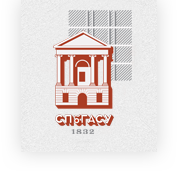Terminology Translation in Cross-cultural Communication: Strategic Choices and Functional Realization
DOI:
https://doi.org/10.63313/LLCS.9085Keywords:
Terms, Translation strategy, Translation method, Cross-cultural communicationAbstract
Term translation plays a crucial role in professional and cross-cultural communication. In the context of globalization, cooperation between different countries and regions has become increasingly frequent, highlighting the importance of term translation. Terms are core components in professional fields, and accurate translation of terms is fundamental to ensuring precise communication of information. Any tiny distinctions may lead to misunderstanding or confusion, thereby affecting the quality and effectiveness of professional and cross-cultural communication. Accurate translation of terms helps to eliminate cultural barriers and facilitate understanding and cooperation among all parties involved. Term translation involves the transmission of professional knowledge and the adaptation of cultural backgrounds, making it a complex and delicate task. To ensure accurate and natural conversion of terms between two languages, flexible and diverse translation strategies and methods are required. This article analyzes relevant examples of term translation from the perspectives of two translation strategies and five translation methods. These examples demonstrate the practical effects of different translation strategies and methods in term translation and provide some useful references and insights for the practice of term translation.
References
[1] Wang Bing. On the Improvement of Terminology Translation Ability in the Cultivation of Masters of Translation and Interpreting from the Perspective of Controlling Theo-ry——Taking the Translation of Meridian and Acupoint Terminologies in Chinese Health Qigong Wu Qin Xi as an Example [J]. Journal of Hulunbeier Universities, 2024, 32(03):39-45.
[2] Shen Guofei. The Complementary Integration of Foreignization and Domestication in Fu Donghua's Translation of Gone with the Wind [J]. Appreciation of Literary Masterpieces, 2025, (24):182-184. DOI: 10.20273/j.cnki.mzxs.2025.24.055.
[3] Shao Rongqing. Research on Cultural Default and Free Translation Compensation Strategies in English Literature Translation[J]. Journal of Jiangxi Vocational and Technical College of Electricity, 2024, 37(02):120-122.
[4] Zhao Qi, Lu Cheng. The Effects of Transliteration Applied in English and Chinese Transla-tion [J]. Journal of Guangxi Normal University (Natural Science Edition), 2013, 34(01): 118-124. DOI: 10.16601/j.cnki.issn1002-5227.2013.01.009.
[5] Fang Mengzhi. A Dictionary of Translation Studies in China [J]. Shanghai Journal of Trans-lators, 2011, (01):82.
[6] Zhang Liangjun. Study on Word-formation of Chinese and English Parody [J]. Journal of Mudanjiang Normal University, 2007, (04):99-101. DOI: 10.13815/j.cnki.jmtc(pss).2007.04.004.
Downloads
Published
Issue
Section
License
Copyright (c) 2025 by author(s) and Erytis Publishing Limited.

This work is licensed under a Creative Commons Attribution-ShareAlike 4.0 International License.















